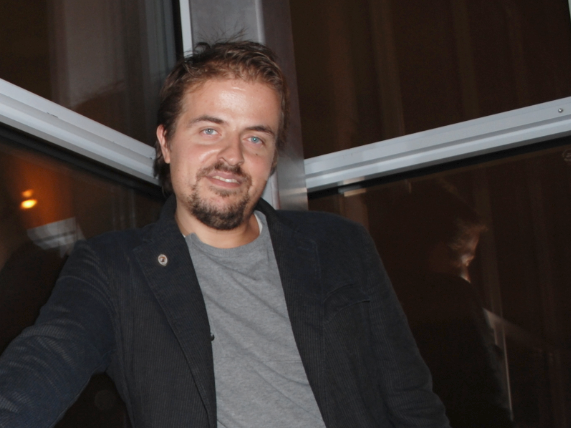We want to see the decision-makers’ change of mindset
Despite the various discussions about the impact technology has on people’s health in the past, not only all of us accepted all these changes, but most cannot imagine their lives without them anymore, says Bimpas.
The euPOLIS project is a complex, delicate process of incorporating innovative technological solutions, highly inspired by nature, into otherwise obsolete and costly-oriented “traditional” urban planning. It also engages citizens and local stakeholders throughout the entire course, to make sure the implemented changes and improvements fit the needs, aspirations and are to their liking. To achieve this, the euPOLIS team must consist of a rich base of experts in various fields, and each of them to play the exact perfect-fitting role, with a strong, yet open and flexible enough playmaker. That’s where the name of Dr. Manthos Bimpas comes up. An expert in Electrical and Computing Engineering from the National Technical University of Athens is formally the project coordinator of the euPOLIS, but for the team of 28 consortium players (circa 120 people), a heart and soul of the mission of making the citizens’ lives better. His immense experience in the European projects provides confidence and a positive attitude towards the results expected after four years of research and implementation of the euPOLIS solutions to the four front-runner cities.

What are the biggest challenges of leading large consortiums and coordinating 28 partners within the euPOLIS project, especially during the COVID19 pandemic?
The biggest challenge especially with the current pandemic is to bring people from different backgrounds together into the same “virtual” place and manage to efficiently work altogether in a collaborative manner. No matter how digital technologies have improved during the last years, human contact cannot be replaced by any digital means. The euPOLIS intensively proves this by having citizens and local stakeholders’ engagement as an absolute necessity from day one in the process of co-designing the co-owned urban solutions.
What is the big euPOLIS mission, what will it bring to the citizens?
The euPOLIS aims to deal with social challenges due to the global geopolitical, economic, climate, and other kinds of changes, such as the COVID19. The euPOLIS focuses to support the actual needs of citizens and local communities that up today are not widely and largely recognized or being neglected due to the prevailing practices in urban planning. Hence cities often end up with costly investments that are not embraced by the local communities. This is the main mission that the euPOLIS aims to bring to citizens!

Tell us about the euPOLIS partners?
The euPOLIS consortium consists of organizations and experts with extensive backgrounds in research and innovation developments but also in the business domain, including Urban, Spatial and Environmental Planning, public health and wellbeing, NBS implementations, Civil, Urban Water, Environmental and Energy Engineering, Monitoring/Big Data and ICT. The responsibilities of each partner were assigned according to proven expertise and the competencies needed to conduct the project activities.
Your experience with the EU projects is vast. What is most challenging for the citizens and the cities to incorporate in their new routines – is it the EU legislature, new technologies?
Citizens are open to accepting any technology as long as they see a benefit out of it… There were certain cases in the past where there were a lot of discussions, even including potential impacts on human health- about technologies such as seamless communication networking, autonomous driving, 3G/4G/5G, automation in the working environments, etc. People not only accepted all these technologies, but most of them cannot live without them anymore. The adaptability of the legislation and the regulatory framework is indeed an issue that deserves consideration by us. Thus, emphasis will be given on existing legal constraints and standards applicable to the euPOLIS system to comply with all types of legal regulations, urban-planning regulations, health and safety laws, insurance laws, and others that could be of any concern. As part of the standardization activities to be carried out, it is envisioned to initiate steps towards future standards and recommendations for the widespread adoption of the euPOLIS systems
How were the four FR cities chosen? What do they have in common, and what do you see as the greatest potential of each FR city to the project?
The FR cities were selected based on the criteria set by European Commission for the specific topic. Hence, the selected cities represent various geographical areas of Europe (from the Northern to the Southern and from Eastern to Western Europe) and are of different sizes (from small like Gladsaxe in Denmark to medium like Pireaus in Greece, large like Lodz in Poland and finally extra-large like the city of Belgrade in Serbia). All the FR cities will have the unique opportunity to exploit the partners’ knowledge in various technical and scientific domains (as explained before) to quantitatively and qualitatively assess the performance of carefully selected nature-based solutions that will be installed on their selected test sites.
No matter how digital technologies have improved during the last years, human contact cannot be replaced by any digital means.
Talking about the health and wellbeing of the citizen, not many people would take technology into account. Tell us, how could various gadgets, and other technical solutions that the euPOLIS partners will provide help measure and deliver more happiness, health, and satisfaction to the citizens?
The health and WB of the citizens can be significantly improved by emerging technologies and NBS implementations. The increased engagement of the citizens through the use of proper Information and Communication Technology tools will ensure a participatory multi-stakeholder process that will result in enhanced ownership of solutions and visionary/human-centered planning. EuPOLIS’s approach connects NBS interventions for open public spaces with citizens’ needs for improved public health and well-being. The main targets are to:
(a) systematically deploy Multi-Functional natural systems to simultaneously enhance public health and well-being and create resilient urban ecosystem services at lower Life-Cycle Costs (LCC);
(b) regenerate and rehabilitate urban ecosystems to improve PH and WB, while in parallel addressing key challenges such as low environmental quality and low biodiversity in public spaces, resilience to climate change and other extreme events, water-stress and pollution, undervalued use of space in deprived areas;
(c) create inclusive and accessible urban spaces by systematically implementing gender mainstreaming strategies and new participatory and communicative tools (e.g., use of ICT platforms and 3D visualization tools). By offering new outlets and communications channels, euPOLIS aims to create a satisfying engagement experience for citizens, thus helping local communities to overcome their general reluctance to change by fostering the sense of empowerment, ownership, and trust to ensure that diverse groups’ needs are voiced and properly addressed;
(d) create cities-for-healthy-people: proposed NBS with locally improved microclimate and the environment in the most visited areas will improve citizens’ quality of life, providing them with socializing open areas that stimulate social exchange and inclusivity.
Bimpas’ background
He has been successfully involved in many European projects dealing with radar sensors, telematics, communication systems and data processing, He has actively participated in more than 50 EC funded and national projects during the last 20 years, such as LEAKING, WATERPIPE, MONICO, MEMSCON, eVacuate, PPDR-TC, RECONASS, ICeWATER, ZONESEC, INACHUS, PANOPTIS-H2020, STAMINA -H2020, euPOLIS-H2020, the upcoming HEART-H2020 and several others.
What would you consider success after the project is completed?
We, the euPOLIS consortium, want to see an actual change of relevant decision-makers’ mindset to more healthy urban environments, and so do the citizens. The level of our success depends on the following expected multiple benefits: increased amenity and public health and wellbeing; reduced water, air, and noise pollution; reduced energy requirements and improved local diversified energy production from local sources; enhancement biodiversity; improved microclimate and indoor environment quality; healthier environment; improved quality of life at significantly lower whole-life costs; attractive neighborhoods, a collective sense of belonging, reduced city people isolation and indirectly reduced crime.
A. Malusev
